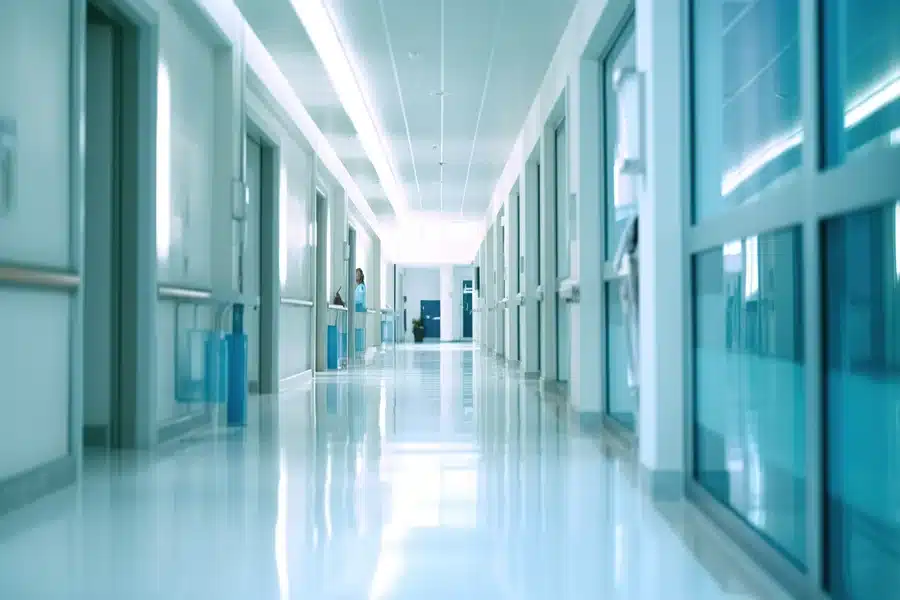Creating a Safer Healthcare Environment: It Starts With the Infrastructure

You probably think of safety in healthcare as something that happens in real time, like how nurses sanitize their hands or how doctors use clean instruments. That’s true. But the foundation of safety? It starts way before any of that. It’s in the pipes. In the walls. In the systems, you can’t always see. Infrastructure plays a bigger role in patient safety than most people realize.
One overlooked area? Water systems. If they’re not managed right, they can quietly cause serious problems. Standards are there to help prevent that. For example, AAMI ST108 gives facilities guidance on how to manage water quality used for medical purposes. That’s not just bureaucracy — it’s protection.
When the Building Becomes the Problem
Think about what infrastructure means in a hospital. It’s not just bricks and pipes. It’s the way the air moves through the vents. It’s the water flowing to the sterilizers and sinks. It’s the setup that supports every life-saving action happening inside those walls.
Now ask yourself: what happens when that setup starts to fail? And you cannot rely on it.
Outdated systems can do more harm than you might expect. Poor water flow can grow bacteria. Weak air circulation can spread airborne particles faster than you can stop them. These aren’t small problems. They’re silent risks. And you might not know they exist until it’s too late.
The Risks Behind a Clear Glass of Water
Water is one of the most-used resources in any healthcare setting. It’s used for cleaning wounds, washing hands, disinfecting tools, running dialysis machines, and more. But it’s not just about having water — it’s about having safe water. Every drop.
The scary part? Contaminated water doesn’t always look dirty. It might seem clear and cold. But inside, it can be hosting microbes that thrive in stagnant spots or poorly maintained systems. Legionella is one of the better-known threats, but it’s not the only one.
Even something as basic as water temperature can have an impact. If it’s too warm, bacteria grow faster. If it’s too cold, it might not kill pathogens during sterilization. And if the flow is inconsistent, biofilm can build up. That’s like a cozy home for germs.
Why Standards Matter (Even When They Feel Complicated)
You might feel overwhelmed when hearing about standards. There are a lot of them. Some sound super technical. But here’s the thing: they exist to keep people safe. They give teams a baseline. A guide. They help make sure that critical systems — especially water systems — are doing what they’re supposed to.
And yeah, AAMI ST108 is one of those guides. It’s not about adding more work for already busy people. It’s about giving them tools so they can catch issues early. So they don’t have to deal with bigger problems later.
Think of it like this: would you rather patch a leak today, or deal with an outbreak next month?
Designing for a Safer Tomorrow
Now let’s look ahead. Because the future of healthcare? It’s changing fast. Technology is advancing. Patient expectations are rising. But so is awareness. Hence, a need to pay close attention to the details.
People increasingly recognize that a facility’s design can significantly impact health outcomes. That means new buildings are being designed with smarter systems—not just flashier tech, but plumbing that monitors itself, vents that adjust airflow in real time, and materials that resist microbial growth.
Some facilities are even rethinking layouts. Where do the sinks go? Where the equipment is cleaned. Where people walk. All of it matters. And for existing hospitals, upgrades are becoming part of the long-term plan. Not because it’s trendy, but because it’s necessary, both for the patient and for the facility itself.
Wrapping It Up
No patient ever says, “Wow, great pipes in here.” But the truth is, what they don’t see might be the very thing keeping them safe. And for staff? Working in a space that’s built for safety makes their job easier. It supports every decision, every protocol, every moment that could save a life. So when we talk about safety, let’s not only focus on the front lines. Let’s look behind the walls, beneath the floors, and above the ceilings.
